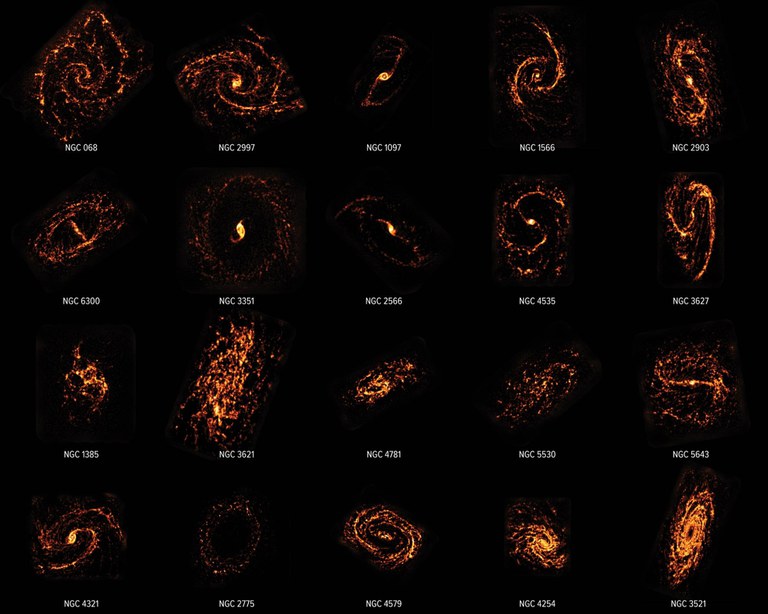Galaxies and galactic nuclei
ALMA can make high-resolution images of the molecular gas over entire galaxies to map in detail the main dynamical components of all galaxy types in various mass ranges, including spiral galaxies, elliptical galaxies, dwarf galaxies, and satellite galaxies. These images probe both parsec and kilo-parsec scales that are needed to explore the relationship between star formation, gas density and gas kinematics. The small-scale structure of the molecular component will clarify the mechanisms that produce starbursts/AGNs in galaxies, and the associated feedback processes, such as outflows of molecular gas, bubbles and winds.
The high-resolution images from ALMA enables studies of individual molecular clouds in nearby galaxies, including the Magellanic clouds, which are known to have lower metallicity and dust content, and have a star formation rate per unit area that is about 10 times larger than the solar neighborhood. ALMA can also be used to determine the masses and kinematics of optically obscured galactic nuclei with a resolution of a few parsecs and image the distributions of a variety of molecules.
Our own Galactic center provides a unique opportunity to study at very high spatial resolution the physical processes occurring in a galactic nucleus, in particular the nature of the molecular cloud population and the physical phenomena occurring in the vicinity of a massive black hole. The central region of our galaxy hosts a crowded environment with strong shear, magnetic fields and frequent cloud-cloud collisions. At the dynamical center lies Sgr A*, a strong radio continuum source and the nearest supermassive black hole. Together with the supermassive black hole at the center of M87, it forms a prime target for the Event Horizon Telescope of which ALMA is a prominent part. ALMA observations will be essential to understand the nature of the ISM in the Galactic center and its star forming properties. Polarization measurements will also be extremely important in establishing the magnetic field geometry within the molecular gas – strong fields are thought to permeate much of the nuclear region.
Gamma ray bursts (GRBs) are the brightest transient phenomena in the Universe, arising from poorly understood physical catastrophes which may involve the collapse of the densest core of a massive star to a Black Hole, or possibly the coalescence of two collapsed objects. Millimeter emission lags the high energy burst in time and can provide key insight into the development of the burst. The development of the burst can then be used to derive the energy, density and other key parameters of the explosion and help characterize the nature of the originating event.

Figure: Image of carbon monoxide emission from 20 of the 74 galaxies in the PHANGS-ALMA survey.
ALMA Science Highlights
